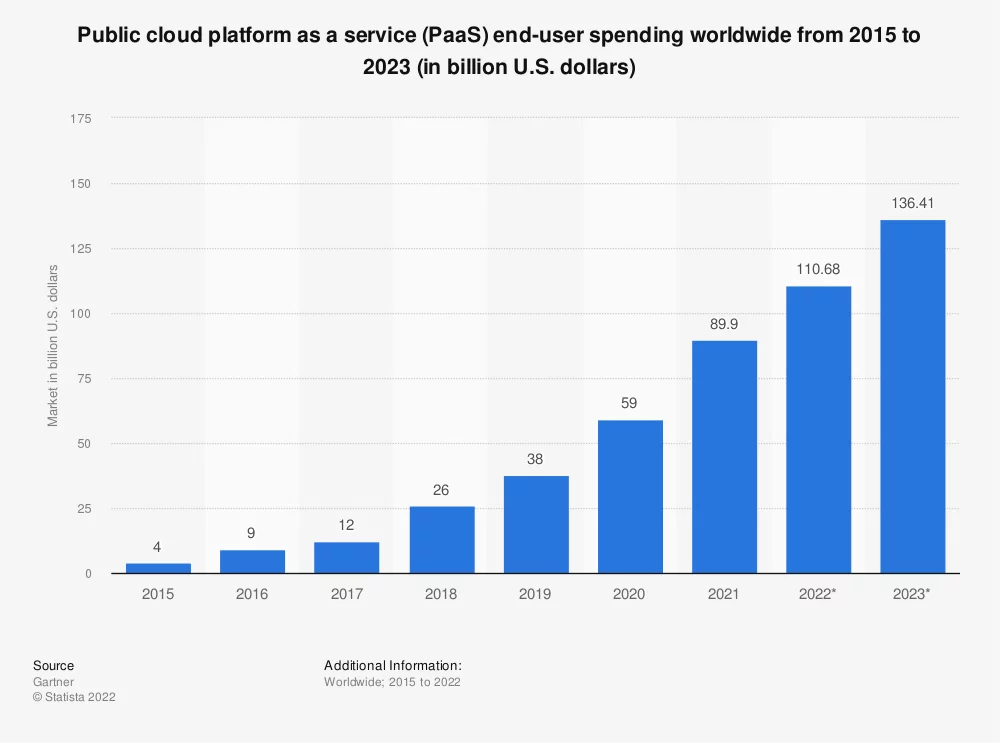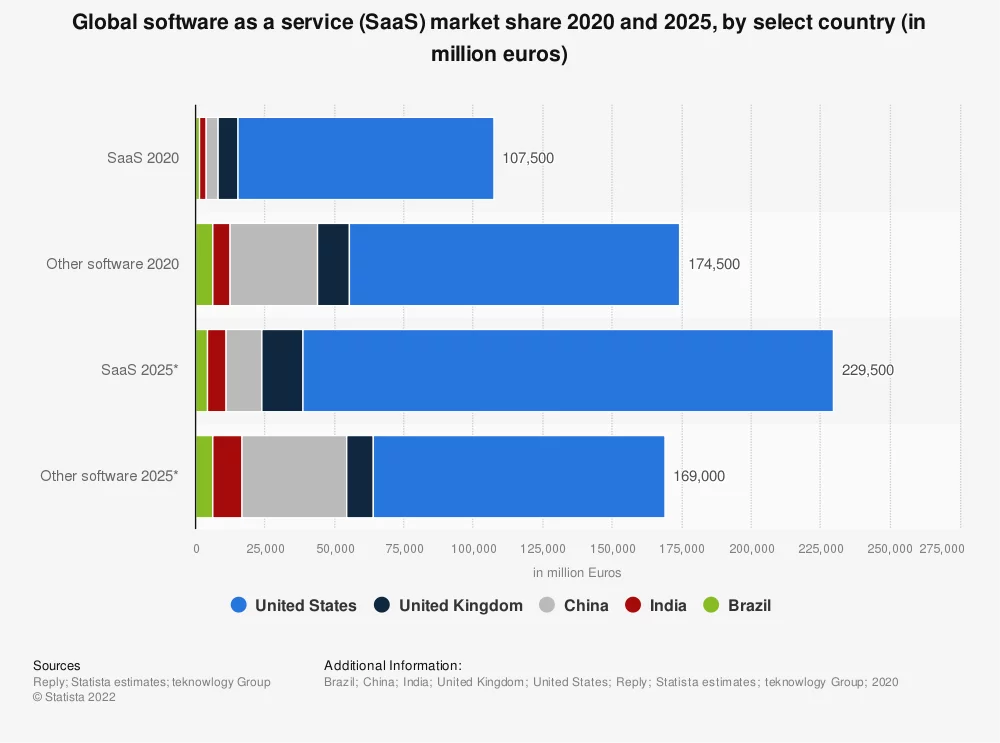Cloud computing services have reformed how businesses have worked, allowing them to use IT platforms, software, infrastructures, and applications via online hotspots and the Internet. Many mid-sized organizations employ IaaS, PaaS, and SaaS, while the majority of large enterprises use all three.
The phrase “as a service” relates to how these solutions use IT assets, which is a key distinction between cloud computing and traditional IT. In traditional IT, a company purchases installs, manages, and maintains IT assets in its own on-premises data center, including hardware, system software, development tools, and applications. In cloud computing, the user consumes the assets with the help of an Internet connection and pays for them via a subscription or pay-as-you-go model; the cloud service provider owns, administers, and maintains the assets.
The major benefit of IaaS, PaaS, SaaS, or any other “as a service” solution is financial: A customer may access and expand the IT capabilities it needs for a predictable price, avoiding the cost and overhead of buying and maintaining everything in its own data center.
Cloud computing: What is it?
Modern methods of accessing data and information online rather than on a hard disk include cloud computing. The cloud server outperforms conventional storage systems in terms of speed, security, cost, and efficiency.
Everyone now uses cloud computing in a variety of industries. Because it allows emerging and established firms the ability to scale whenever they want, it is especially a lifesaver for them.
You can access your data from almost anywhere via the cloud because you are not reliant on hardware. Your data is always accessible to you because it is stored online. Thanks to cloud computing, businesses no longer need to invest in expensive gear; instead, they can easily scale by paying for extra space.
Types of Cloud Computing Services
![]()
-
IAAS Cloud Computing
IAAS is a method for providing computing infrastructure as on-demand services. It is one of the three essential models for cloud services. In a fully outsourced, on-demand service model, the user buys servers, software data center space, or network equipment and rents those resources. The resources are distributed as services, and it supports dynamic scalability. On a single piece of hardware, numerous users are typically present. It is entirely up to the customer to select its resources carefully and in accordance with needs. Additionally, it offers billing management. The cloud computing infrastructure as a services (IaaS) segment is expected to grow by 30.5 percent in 2023 compared to 2022.

Amazon, Microsoft, and Alibaba are major players in this segment.
Benefits of IaaS
- The provider is always able to deploy the resources to a customer’s environment
- Its capacity allows users to scale the firm in accordance with their needs
- When delivering resources like virtual machines, apps, storage, and networks, the provider has a variety of choices
- It has the capacity to support a huge volume of users
- It is very cost-effective and simple to grow where companies are able to afford the significant costs incurred by implementing cutting-edge technologies
- The cloud provides architecture
- Offers an increase in scalability and flexibility
- Workload changes are supported
Drawbacks of IaaS
- Security concerns
- Service and network delays are major problems
-
PAAS Cloud Computing
A cloud delivery approach for apps made up of services managed by a third party is called Platform As A Service (PAAS). It offers elastic scaling for your application, enabling developers to create online services and applications with public, private, and hybrid deployment methods.
It is a cloud service where a third-party provider gives cloud computing hardware and software tools. Developers take advantage of the provided tools. Application PAAS is another name for PAAS. It aids in the organization and upkeep of beneficial apps and services. It is less expensive than IAAS and has a well-equipped management system. The platform as a service (PaaS) market is anticipated to reach a value of over 136 billion dollars in 2023.

Microsoft Azure, Amazon Web Services, Google Cloud, and IBM Cloud are major players of this segment.
Benefits of PaaS
- It is not necessary for programmers to care about the database or programming language that the application was created in
- It gives programmers the option to create apps without having to deal with the overhead of the underlying infrastructure or operating system
- It gives developers the freedom to concentrate on the design of the application while the platform handles the language and database
- It is both portable and adaptable
- It is reasonably priced
- It controls the various stages of application development on the cloud extremely effectively
Drawbacks of PaaS
- Includes a lack of security and a high risk to data
- There is a high likelihood of data mismatch when integrating the data because data is kept in both local storage and the cloud
-
SAAS Cloud Computing
Abbreviated as Software as a Service, it is a software that is deployed as a hosting service and is accessed over the Internet. It is also a method of software delivery in which software and its associated data are centrally hosted and accessed using their client, typically an online browser, over the web. Modern apps are developed and deployed via SAAS services.

It enables access to software and its features from any location with a reliable internet connection device and a browser. An application is centrally hosted and accessible via the Internet to numerous users in diverse locations.
Salesforce, Microsoft, Adobe, and SAP are all major players in this segment.
Benefits of SaaS
- It is a type of hosted cloud computing service that offers a wide range of capabilities and services
- It can help in creating and implementing web-based software applications with them
- Compared to on-premises software, it offers a reduced total cost of ownership because no hardware or licenses need to be purchased, installed, or otherwise obtained
- Through a browser, it is simple to access
- For initial setup, there is no fee
- Low costs for maintenance
- Since installation takes less time, time is effectively controlled
Drawbacks of SaaS
- Mediocre performance
- There are a few customizing options available
- Data privacy and security are issues
Difference between IAAS, PAAS and SAAS
| Platform | IAAS | PAAS | SAAS |
| Stands for | Infrastructure as a service | Platform as a service | Software as a service |
| Uses | Used by network architects | Used by developers | Used by the end user |
| Access | Gives access to the resources like virtual storage and virtual machines | Gives access to runtime environment for development tools and deployment of an application | Gives access to the end user |
| Model | A service model that offers virtualized computing resources over the Internet | A model that delivers tools used for the development of applications | A model that hosts software to make it accessible to clients |
| Technical understanding | It calls for technological expertise | The fundamental setup requires some understanding | Technical expertise is not necessary, and the company takes care of everything |
| Percentage rise | 12% increment | 32% increment | 27 % rise in the cloud computing model |
| Cloud services | Amazon Web Services, sun, vCloud Express | Facebook and Google search engine | MS Office web, Facebook, and Google Apps |
| Scalability | It is highly scalable and flexible | It is highly scalable to suit different businesses according to resources | It is highly scalable to suit small, mid, and enterprise level business |
| Usage | Used by an experienced developer to create original applications | Used by mid-level developers to create applications | Used by those who enjoy entertainment |
| Enterprise services | AWS virtual private cloud | Microsoft Azure | IBM cloud analysis |
| Outsourced cloud services | Salesforce | Force.com, Gigaspaces | AWS, Terremark |
| User Controls | Operating System, Runtime, Middleware, and Application data | Data of the application | Nothing |
| Popularity | Among web developers and researchers | Among web developers who focus on the development of scripts and apps | Among companies and consumers, such as file sharing, email, and networking |
What Characteristics Should a Cloud-based Infrastructure Have?
- To take the volume of visitors to your website into account and choose the processing power and storage that are most appropriate.
- Must be adequate to handle the traffic on website
- If the site’s traffic is relatively modest, choose an expensive cloud infrastructure for the site to not crash due to a lack of processing power.
- Downtime and migration should be considered before selecting the service.
Summary
To sum up, if you want to keep up with evolving standards, you must invest in cloud computing. It will not only enable you to provide better customer service, but it will also enable the expansion of your company. Start with Nestify if you want to start using the cloud. Large cloud hosting providers like AWS is available through it.
FAQs
Why is IaaS preferable to PaaS?
IaaS gives users direct access to its cloud servers and storage, in contrast to PaaS. It offers more networking layers, flexibility, and scalability. The underlying infrastructure can be outsourced, so you do not have to purchase and install it. You can request resources, obtain them, and pay for them as you go.
IaaS can be more resilient than PaaS when comparing cloud infrastructure as a service with the platform as a service. The vendor you select will have no bearing on the resilience. The same is true of security. IaaS expenses can increase due to the precise nature of invoicing, which is often charged per hour upon consumption of the services.
PaaS, on the other hand, streamlines and simplifies the procedure so that you may work on high-level, sophisticated programming. As a result, developing apps is more efficient in terms of both time and money. However, the cost increases when your application is scaled up. You are locked into the environment and interface you choose once you sign a contract with a PaaS provider. One of the distinctions between IaaS and PaaS is this.
Which cloud computing service—SaaS, IaaS, or PaaS—is more affordable to use?
If we only consider costs, SaaS is the least expensive cloud computing service out of the three, followed by PaaS and IaaS.
IaaS, PaaS, or SaaS is AWS?
All three cloud computing services are combined into AWS. It provides its services using a combination of SaaS, PaaS, and IaaS.



